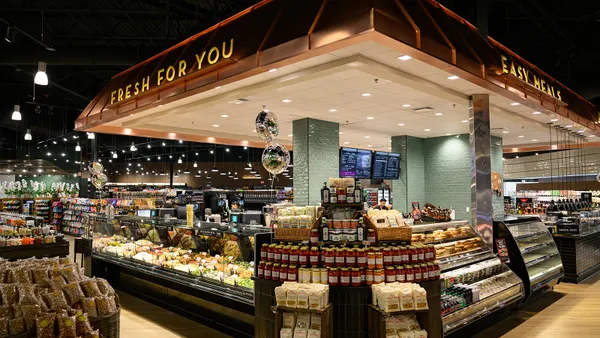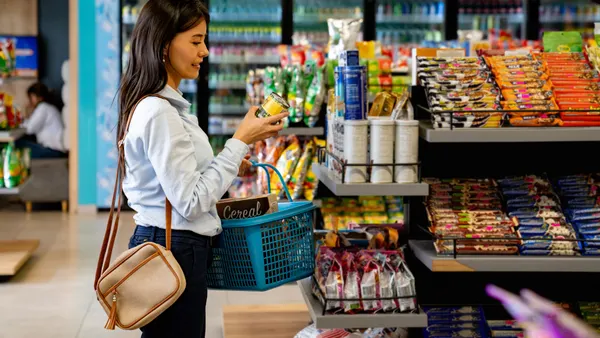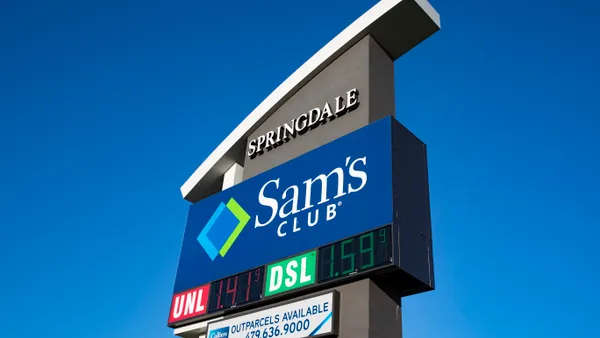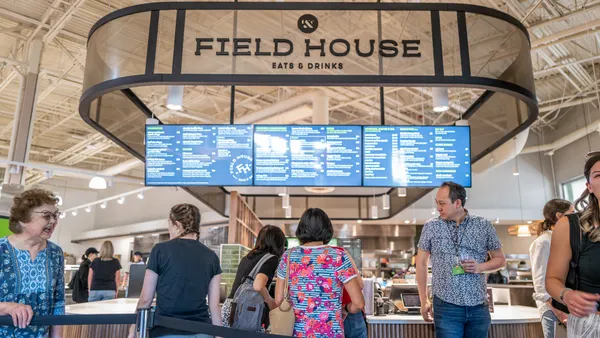Dive Brief:
- Blue Apron intends to use only 100% recyclable, reusable or compostable material for its meal kit boxes by the end of 2025, the company announced in a blog post on Thursday.
- The meal kit seller also pledged that it will use 75% post-consumer recycled content in its boxes, as measured by weight, by that point.
- Blue Apron aims to build its credentials as an environmentally friendly supplier as it seeks to regain profitability and deals with slowing consumer demand.
Dive Insight:
Blue Apron's announcement that it intends to stop using boxes that cannot later be turned into something else complements the company's existing sustainability efforts.
For example, the company aims to use the smallest possible box for each order in order to conserve raw materials and save space on trucks, which Blue Apron says is not only good for the environment but also helps it enhance its products by freeing up money that can be invested in better ingredients.
The company said in the blog post that its packaging is currently 85% recyclable and contains more than 40% post-consumer recycled content, while 100% of its recipe cards are made from materials certified by either the Forest Stewardship Council or the Sustainable Forestry Initiative. In addition, Blue Apron has since 2019 kept shipments cold using drain-safe gel packs that can be recycled after the water they are filled with is removed.
Blue Apron is also a participant in the How2Recycle labeling program, which helps consumers understand how to recycle products they buy, and says using its products instead of preparing the same meals from ingredients from a grocery store can cut a person's carbon footprint by a quarter.
Blue Apron is bolstering its profile as an eco-friendly supplier as it strains under the weight of competitors like HelloFresh, the German meal kit company that has been grabbing market share in the U.S. meal kit business at Blue Apron's expense. HelloFresh added more than 1 million active customers in the U.S. during the first quarter of 2021 and saw its profitability soar even as Blue Apron posted a loss for the period.
Like Blue Apron, HelloFresh has been focusing on efforts to improve its environmental profile. The company, which already uses recyclable packaging, said in March that it plans to cut carbon dioxide emissions from its global operations by 60% by next year as part of a range of sustainability initiatives. In April, HelloFresh introduced 100% post-consumer recycled content for packaging its HelloFresh and EveryPlate lines.
Blue Apron is also facing a slowing meal kit market as it looks to strengthen its business. The sector's growth rate is expected to drop from 70% in 2020 to 18.2% this year as the surge prompted by the pandemic slips away, according to an estimate from Coresignt Research.












